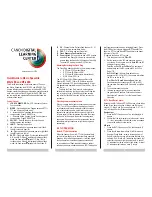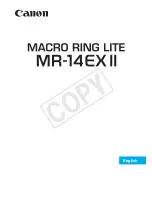PL-A780 Camera Specifications
11
PixeLINK PL-A780
Document No.: 04646-01
MACHINE VISION CAMERA
SYSTEM GUIDE
Copyright © 2004 PixeLINK
All Rights Reserved
image quality. Defocusing the lens slightly to blur the lines in the image can eliminate the
colors.
Decimation reduces the image resolution but will introduce more artifacts as seen in Figure 6
b. The image has been magnified to allow comparison with Figure 6 a. The benefit of using
decimation is mainly the increased frame rate possible with the reduced resolution.
Averaging, as shown in Figure 6 c., pretty much eliminates the artifacts from the Bayer
pattern. It has much the same effect as defocusing the lens and the image appears slightly
smeared.
Figure 6 d. shows that resampling provides the best overall image quality of the Pixel
Addressing modes. There are still Bayer artifacts but they are reduced and the sharpness in
the image is retained. For resampling to work properly, the Color Coding needs to be set to
YUV422.
a. 1248 x 288
Full resolution
b. 1248 x 288
Decimated by 3
Final image size 416
x 96
c. 1248 x 288
Averaged by 3
Final image size 416
x 96
d. 1248 x 288
Resampled by 3
(YUV422)
Final image size 416
x 96
Figure 6 Examples of the effects of Decimation, Resampling and Averaging on Image
Quality
Binning will provide image quality similar to the averaging mode, but the image will be much
brighter – by roughly the square of the Pixel Addressing factor. Note that in CMOS sensors,
the binning is performed off-chip (after the conversion from analog to digital), so there is no
increase in sensitivity or speed (frame rate) compared with the non-binning mode.
Which Pixel Addressing mode is used depends on the objectives. For the very best image
quality when capturing images for printing or analysis, use the full resolution. For fast video


















